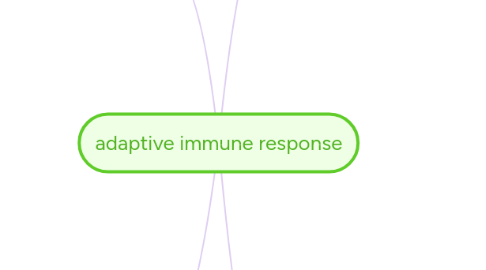
1. development of T and B cells
1.1. lymphocytes
1.1.1. T-cell
1.1.2. B-cell
1.2. maturation site
1.2.1. T-cell
1.2.1.1. thymus
1.2.2. B-cell
1.2.2.1. bone marrow
1.3. have surface markers and receptors
1.3.1. f(x)
1.3.1.1. bind to other receptors
1.3.1.2. binds to Ag
1.3.1.3. transmit and receive messages
1.3.2. common
1.3.2.1. major histocompatibility complex(MHC)
1.3.2.1.1. class i
1.3.2.1.2. class ii
1.3.2.1.3. class iii
1.3.2.2. cluster of differentiation (CD)
1.3.2.2.1. >300
1.3.2.2.2. CD4-bind to MHC ii
1.3.2.2.3. CD8-bind to MHC i
1.3.2.3. Ag-specific receptors
1.3.2.3.1. mature T and B cell
2. presentation of Ag
2.1. Ag
2.1.1. substances that provoke the immune response
2.2. 1 Ag have > epitopes
2.3. Antigenicity detremined by
2.3.1. size
2.3.2. complexity
2.3.3. foreigness
2.4. presented by professional APCs
2.4.1. macrophages
2.4.2. dendritic cell
2.4.3. B-cell
3. B-cell response
3.1. differentiate
3.1.1. memory B cell
3.1.1.1. stored immunological memory
3.1.2. regulatory B cell
3.1.2.1. prevent excessive inflammatory and autoimmunity
3.1.3. plasma cell
3.1.3.1. launch Ab
3.1.3.1.1. attack invaders
3.1.3.1.2. disable target
4. T-cell response
4.1. APCs activate
4.1.1. T-cell
4.1.1.1. stimulate differentiations
4.1.1.1.1. helper T-cell
4.1.1.1.2. memory T-cell
4.1.1.1.3. regulatory T-cell
4.1.1.1.4. cytotoxic T-cell
4.1.2. B-cell
